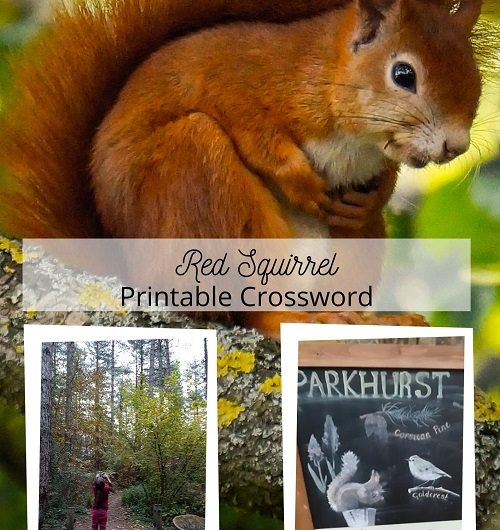One of the objectives of the John Muir Trust Award is learning about the local area. We live on the Isle of Wight, and because of our Island position, we have a lot of red squirrels. We’re one of the few places where red squirrels thrive in the wild. In fact, we’re so serious about our squirrels that it’s against the law to bring a grey squirrel onto the island! I was looking for a fun way to learn about red squirrels, and created a puzzle as a different and interactive way of making notes about red squirrels.
Red squirrels eat mostly hazelnuts, but also beech and chestnuts. They also eat the insides right out of conifer cones. They enjoy fungi, berries and young shoots too. They usually live in dreys high up in trees and use their claws to help them grip the branches.
A red squirrel can start breeding when it is one year old, and can live for up to ten years, though they often don’t survive their first year. The average age of a squirrel in the wild is six years.
The most famous red squirrel is Squirrel Nutkin from the Beatrix Potter stories.
You can download this crossword puzzle for free, but you might find yourself added to a newsletter, should I ever get into the habit of sending out newsletters. By downloading it you’re agreeing to being added to the newsletter, but you’re welcome to unsubscribe at any time.
Curriculum links:
Sc6/2.1a describe how living things are classified into broad groups according to common observable characteristics and based on similarities and differences, including micro-organisms, plants and animals
Also have a look at our worksheets for:
Who Lives in the Forest Layers
Small Mammals Footprints and Food
Bird Sounds (coming soon)




